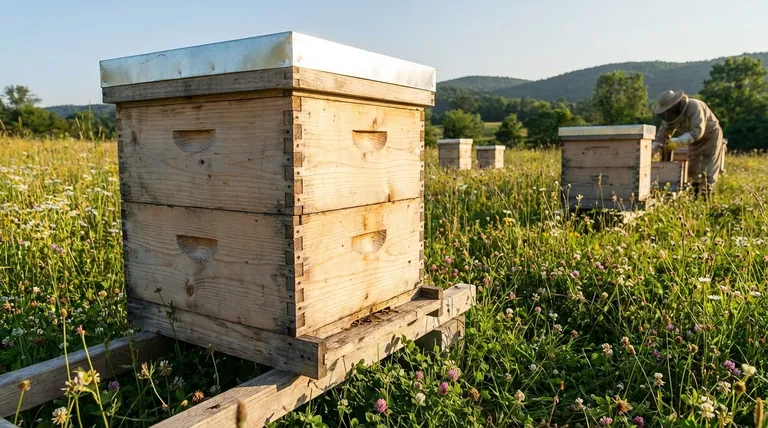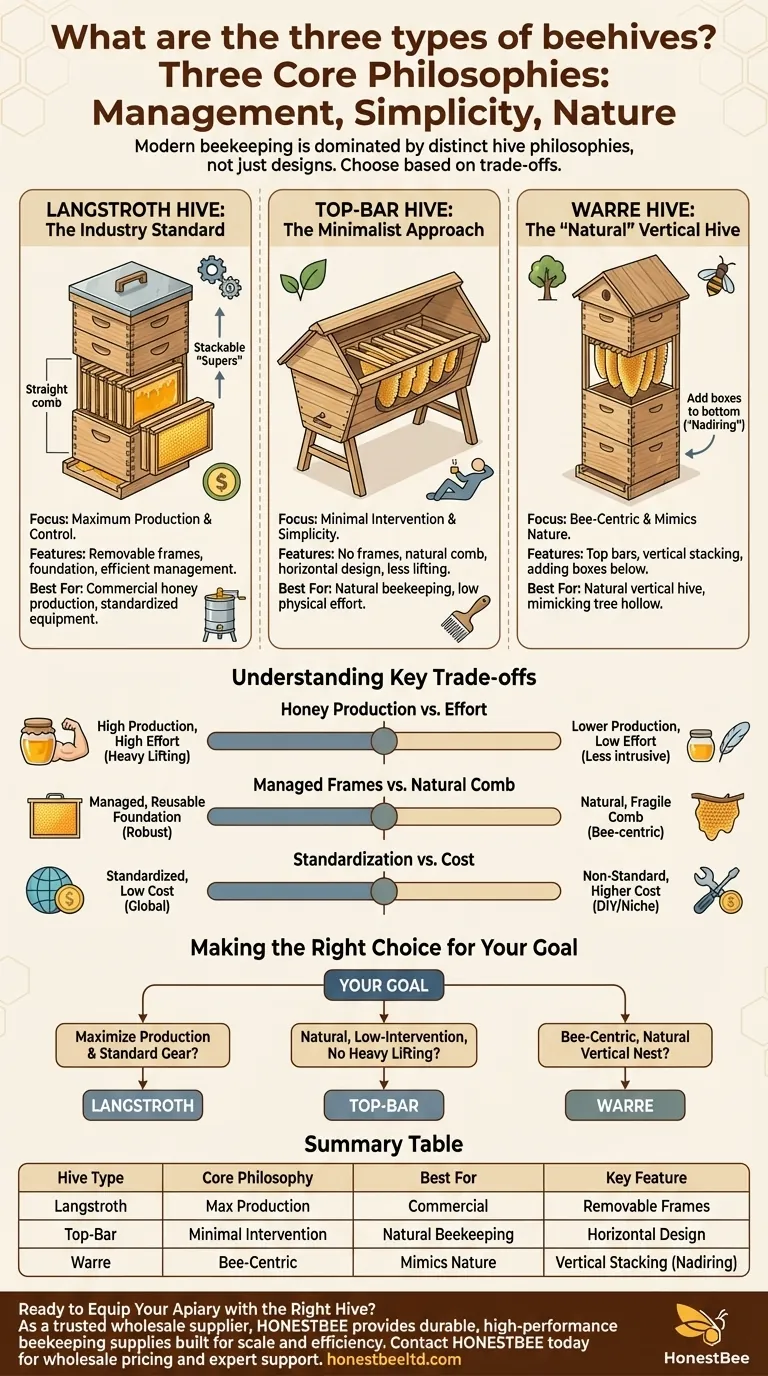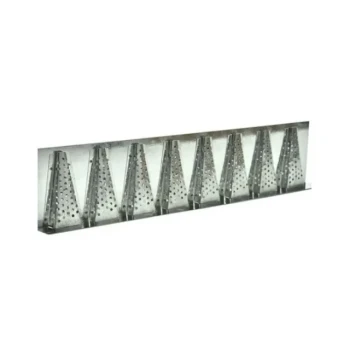While the idea of "three types of beehives" is a common simplification, the reality is that modern beekeeping is dominated by three major hive philosophies, each represented by a distinct design. These are the Langstroth hive, designed for management and production; the Top-Bar hive, designed for simplicity and minimal intervention; and the Warre hive, which aims to vertically mimic a natural bee habitat.
The most critical decision for a new beekeeper is not finding the "best" hive, but understanding the trade-offs between honey production, management intensity, and natural beekeeping principles to choose a hive that aligns with your personal goals.

Deconstructing the Hive: Three Core Philosophies
While dozens of hive designs exist, they can be understood by grouping them into three main approaches. Each design reflects a different belief about the ideal relationship between the beekeeper and the bees.
The Langstroth Hive: The Industry Standard
The Langstroth hive is the most common design in the world, especially in North America. Its key innovation is the use of precisely spaced, removable frames within a stack of vertical boxes (often called "supers").
This modular design makes hive inspections and honey harvesting highly efficient. The frames allow beekeepers to easily check the queen's health, look for pests, and remove honey without destroying the comb.
These frames are typically fitted with a foundation, a sheet of wax or plastic that guides the bees to build straight combs. Plastic foundations are durable and pest-resistant, while wax is more natural but fragile.
The Top-Bar Hive: The Minimalist Approach
The Top-Bar hive (TBH) represents a philosophy of less intrusive beekeeping. It consists of a single, long horizontal box covered with simple wooden bars.
Bees build their comb directly down from these top bars, without the four-sided frames of a Langstroth. This allows for a more natural, free-form comb structure.
Inspections involve lifting one bar at a time, creating less disturbance for the colony. Because there are no heavy boxes to lift, it is often favored by beekeepers with physical limitations.
The Warre Hive: The "Natural" Vertical Hive
The Warre hive is often called the "people's hive" and was designed to mimic the internal structure of a hollow tree. Like the Langstroth, it is a vertical, stacking hive.
However, it uses simple top bars instead of full frames, and new boxes are typically added to the bottom of the stack (a process called "nadiring"). This encourages the bees to move their honey stores upward and the brood nest downward, as they would in nature.
The Warre is designed for minimal intervention, with inspections being far less frequent than in a Langstroth system.
Understanding the Key Trade-offs
Choosing a hive means balancing competing priorities. There is no single perfect design; each has inherent strengths and weaknesses.
Honey Production vs. Beekeeper Effort
The Langstroth is built for production. Its interchangeable frames and use of a honey extractor allow for the largest potential honey harvest. However, it requires regular, heavy lifting of 50+ pound boxes.
Top-Bar and Warre hives generally produce less surplus honey. Honey is harvested by cutting the comb from the bar, then crushing and straining it. This process is more disruptive to the individual comb but far less physically demanding for the beekeeper.
Managed Frames vs. Natural Comb
Langstroth frames give the beekeeper maximum control. The foundation ensures straight combs that are robust and can be reused after extraction, saving the bees significant energy.
Top-bar and Warre hives promote natural comb, which advocates see as healthier for the bees. However, this comb is delicate, prone to breaking during inspections, and cannot be put in a centrifugal extractor.
Standardization and Cost
Langstroth equipment is the global standard. Components are readily available, interchangeable between manufacturers, and relatively inexpensive due to mass production.
Equipment for Top-Bar and Warre hives can be harder to find and more expensive. Many beekeepers build their own, requiring a degree of woodworking skill.
Making the Right Choice for Your Goal
Your choice of hive should be a direct reflection of why you want to keep bees in the first place.
- If your primary focus is maximizing honey production and using standardized equipment: The Langstroth hive is the undeniable choice for its efficiency and widespread availability.
- If your primary focus is a natural, low-intervention approach with minimal heavy lifting: The Top-Bar hive offers an accessible and bee-centric experience.
- If your primary focus is a "bee-centric" vertical hive that mimics a natural tree hollow: The Warre hive provides a middle ground that combines vertical expansion with natural comb building.
Ultimately, a successful beekeeping journey begins with selecting a system that aligns with your philosophy and physical capabilities.
Summary Table:
| Hive Type | Core Philosophy | Best For | Key Feature |
|---|---|---|---|
| Langstroth Hive | Maximum Production & Control | Commercial honey production, standardized equipment | Removable frames in stackable boxes for efficient management |
| Top-Bar Hive | Minimal Intervention & Simplicity | Natural beekeeping, low physical effort | Horizontal design with top bars for natural comb building |
| Warre Hive | Bee-Centric & Mimics Nature | Beekeepers seeking a natural vertical hive | Vertical stacking with nadiring (adding boxes to the bottom) |
Ready to Equip Your Apiary with the Right Hive?
Choosing the right hive is the first step to a successful season. As a trusted wholesale supplier, HONESTBEE provides commercial apiaries and equipment distributors with durable, high-performance beekeeping supplies built for scale and efficiency.
We understand the unique demands of commercial operations. Let us help you source the reliable equipment you need to support your beekeeping goals.
Contact HONESTBEE today for wholesale pricing and expert support.
Visual Guide

Related Products
- Australian Langstroth Beehive Boxes for Beekeeping Wholesales
- Langstroth Honey Bee Box Hive Boxes for Different Depths
- Professional Galvanized Hive Strap with Secure Locking Buckle for Beekeeping
- Portable Bee Mating Hive Boxes Mini Mating Nucs 8 Frames for Queen Rearing
- Nicot Queen Rearing Kit for Beekeeping and Grafting in Nicot System
People Also Ask
- Why might a beginner be advised to start with a Langstroth hive? Unlock a Supportive Beekeeping Ecosystem
- How many deep hive bodies should I use? The Standard for a Healthy, Winter-Ready Colony
- What other types of hives are available besides the Flow Hive? Explore Langstroth, Top Bar, and Warre
- What are the sizes of supers available in a standard hive? A Guide to Deep, Medium, and Shallow Boxes
- What is the best hive for beginners? A Guide to Langstroth, Top Bar, and Flow Hives



















